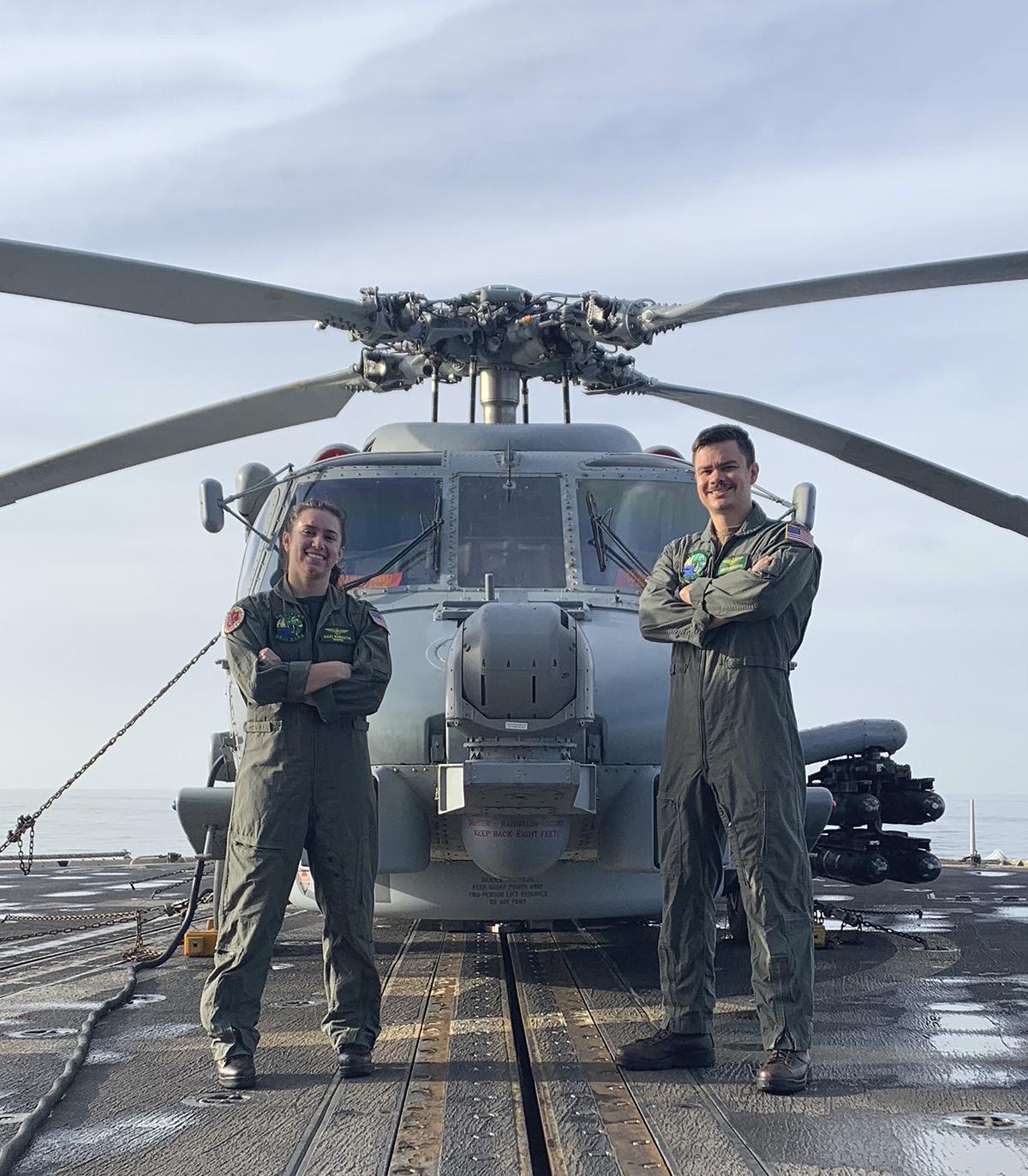From CAPT Michael Middleton, USN (Ret.)
O
ne of the benefits of reaching a position of leadership in a helicopter squadron, is that you are assigned the senior aircrewman as your permanent crew. With the World Famous Indians of HS-6 in ‘86, I was privileged and honored to fly with AWC Andy Anderson. He was an extraordinary sonarman, tactician, and leader. He wasn’t however, a “morning person”. I always asked for the dawn launches, so I had the rest of the day available for “administrative duties”. The AWC had to persevere through those early mornings and always supported his pilot. He also persevered through ALERT 5’s in 110 degree heat when the BIG “E” was going through “the ditch”, and a night landing on an “out of limits” deck roll on a smallboy for a lifesaving MEDIVAC out of Okinawa. But the highlight of our time together was tracking a Soviet “Charlie” sub at night, that was shadowing the carrier in the North Arabian Sea. Once the AWC had contact, he seldom lost it. Sticking to the “Crew Concept” during deployment has many benefits. But it benefitted me the most, since I was honored to fly my last tactical missions with AWC Andy Anderson!
From LT Grant “Dingle” Kingsbery, USN
A
good crew chief is one who is involved in the flight, and someone who takes pride in their knowledge of the aircraft and use of CRM. A crew chief who is reliable and who can be fully trusted to spread the workload of the mission requirements throughout the entire crew makes for a more smooth and safe execution of mission standards. A shout out to AWSC Downey, a crew chief who has set the example for me throughout my time flying. Whether we are flying a FAM flight for a couple of brand new Fleet Replacement pilots and aircrewmen, or a SWTP Lvl 3 PR/SOF Full Mission Profile, his attention to detail and knowledge of NATOPS and SEAWOLF are evident and critical to achieving the learning objectives. Being scheduled to fly with a crew chief who exemplifies the job sets the flight up for success from the beginning, and provides a great foundation to showcase the range of our ability as a community.
Navy Announces Initial Aviation Warrant Officer Selection Board
From MC1 Mark D. Faram, Chief of Naval Personnel Public Affairs new era in Naval Aviation launches on Aug. 2 when a board will meet to select the initial cadre of Aviation Warrant Officers who will be trained to fly the new MQ-25 carrier-based unmanned aerial vehicle. The call for applications, announced in NAVADMIN 141/21 and released on June 28, says that qualified Sailors and civilians can apply for the program through Navy Recruiting Command. Applications to be considered by the board are due on July 26. Last December, the program’s approval came when the Navy formally established the Aerial Vehicle Operator (AVO) warrant officer specialty in NAVADMIN 315/20.
A
Over the next six to 10 years, the Navy plans to recruit, train and send to the fleet a community of roughly 450 aviation warrants. The community is expected to eventually have warrant officers in grades spanning W-1 through W-5. Those selected for the program will first complete Officer Candidate School in Newport, Rhode Island. Upon graduation, they will commission as Warrant Officer One (W-1). They must then complete basic flight training as well as advanced training on the MQ-25 aerial vehicle. Once basic flight training has been completed, these officers will earn their own distinctive Navy "wings of gold" warfare devices and be assigned the 737X designator. The basic eligibility requirements are outlined in Navy Program Authorization 106A, which applicants can download at https://www.mynavyhr.navy.mil/Portals/55/Career/OCM/PA-106A_CWO17371_AVO_Feb-2021.pdf. Both enlisted and civilian candidates can apply, though through separate channels. Active-duty and reserve Sailors must submit their package as outlined in the Enlisted to Officer Commissioning Programs Application Administrative Manual (OPNAVINST 1420.1B). Civilians and enlisted service members from other services should contact a local Navy officer recruiter and apply through Navy Recruiting Command. If an applicant needs a waiver for any of the requirements, it must be submitted in advance with enough lead time to allow approval by the application due date. This is just the first of what will be many selection boards for the program. In the future, these boards will not be announced by naval message, but instead simply added to the Navy Recruiting Command’s officer board schedule available on the MyNavy HR website at https://www.mynavyhr.navy.mil/CareerManagement/Career-Counseling/Commissioning-Programs/. For more news from the Chief of Naval Personnel, follow us on Facebook at https://www.facebook.com/mynavyhr, Twitter at https://twitter.com/mynavyhr or visit https://www.navy.mil/ cnp. 87
www.navalhelicopterassn.org









































